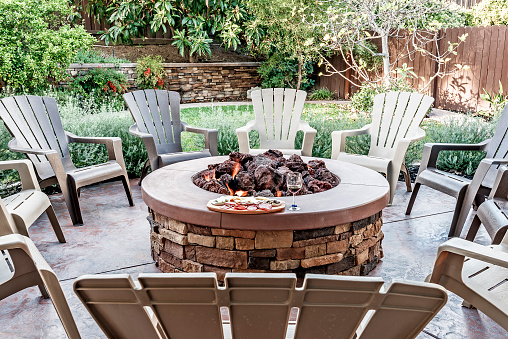Most floods develop over the course of hours or days, but flash floods rise quickly and often without warning, which is why they are so dangerous. Small creeks and waterways can suddenly turn into a powerful wall of water reaching heights of 30 feet or more, and the effects on people and property can be catastrophic.
During the afternoon of September 14, 2015, two successive thunderstorms struck Utah’s Washington County, dropping almost two inches of rain in 30 minutes. Creek waters in the town of Hildale instantly rose to over five feet, sweeping away two vehicles with 16 women and children inside, killing 13. Some of the bodies were found miles downstream.
That same afternoon, seven day-hikers in nearby Zion National Park became trapped when a flash flood filled a narrow canyon in which they were hiking. Caught off guard, all seven drowned. Damage to homes, bridges, and water lines within the county reached nearly $1 million.
Floods are the most common natural disaster on earth. Those on U.S. soil take nearly 200 lives each year, most by flash floods. They force 300,000 persons from their homes, and cause over $2 billion in property damage. With extreme one-day precipitation events on the rise, the risk of flash floods is increasing, no matter where in the country you live. So it’s important to understand how flash floods occur and what you can do to avoid them.
What Causes a Flash Flood?
Flash floods are typically caused by slow-moving thunderstorms, thunderstorms that follow one after another, and heavy rains from tropical storms and hurricanes. They can also be caused by melting ice and snow, and dam or levee breaks. By definition, flash floods develop within six hours of the events that cause them, but they can occur within minutes under the right conditions.
Small streams and dry riverbeds on steep terrain and in low-lying areas can flood quickly during downpours, especially when there is a lack of vegetation to slow the flow of water. Ground conditions are also a contributing factor. Rock, clay soil, and soil that is too dry or already saturated with moisture can prevent water from infiltrating the ground, leaving it nowhere to go but along the surface.
Flash floods occur when excessive water fills creeks, gullies and rivers—those that are normally dry, as well as those that are already flowing — causing a sudden surge of fast-moving water laden with sediment and debris. The force of a flash flood can move boulders, uproot trees, demolish homes, and collapse bridges.
Areas That Are Most Susceptible to Flash Floods
Wherever rain falls, flash floods are possible. Areas east of the Rockies, especially around the Mississippi River, between Washington, D.C. and Boston, and in the southwest are known for getting a lot of flash flood warnings. Geographically favorable locations are along rivers, in deserts, on coastlines, and in urban areas.
Rivers can flash flood when heavy rainfall causes levees to fail. Coastlines are at risk during tropical storms and hurricanes, and when tsunamis strike. In the desert, storms can come on quickly, and because desert sands don’t readily soak up water, heavy rains can rapidly lead to flash floods.
But densely populated urban areas are generally more prone to flash flooding than anywhere else. While rainfall over farmland can seep into the ground, sidewalks and pavement are impervious to moisture, causing heavy rains to run off to low spots very quickly. This can lead to flash flooding on city streets and highway underpasses, and in basements and underground parking garages.
When Flash Floods Are Mostly Likely to Occur
Flash floods can occur at any time of year, but they’re most common after winter snow melts and heavy spring rains. Coastal and nearby inland areas can also experience flash flooding in the summer and fall due to tropical storms and hurricanes. The southern and Gulf states of Florida, Georgia, Louisiana, and Texas are usually the hardest hit.
Awareness: Your Best Protection
Flash floods can occur without any of the obvious indicators such as clouds and heavy rain, and, because they travel quickly and can rage for miles, they can catch people by surprise, whether they’re on foot, in cars, or in their homes.
Make sure you’re informed. Sign up for local weather alerts and stay tuned to regional forecasts when the weather becomes doubtful. Survey your surroundings for potential flash flood locations — such as canyons, small streams, dry riverbeds, and low areas — and avoid them if forecasters issue a flash flood watch or warning.
What to Do During a Flash Flood “Watch”
A flash flood watch is a caution that current weather conditions are favorable for flooding. If a flash flood watch has been issued for your area, take action. Move to higher ground if you’re on foot or in a car, making sure your route steers clear of areas where flash floods are possible. You may need to evacuate to safer territory if you’re at home, depending on where you live. But before you go, take these preparatory steps:
- Bring in outdoor furniture.
- Move valuable indoor items to the highest possible floor.
- Unplug all electrical appliances.
- Make sure your emergency survival kit is stocked with the essentials you’ll need, including water, nonperishable food, flashlights, a first-aid kit, phone charger for your car, essential medications, and personal hygiene items.
- If instructed, turn off your gas and electricity to prevent fires and explosions.
What to Do During a Flash Flood “Warning”
A flash flood warning means flooding is imminent or already occurring. No matter where you are—at home, on foot, or in your car—move to higher ground immediately and stay there until authorities give the all-clear.
If you should see floodwaters, follow the National Weather Service’s basic safety advice to Turn Around Don’t Drown®.
If you’re on foot, avoid walking through water that reaches above your ankles. Water just six inches deep can knock you off your feet, especially if it’s fast-moving, and increase your chances of getting swept away into deeper waters. Also steer clear of electrical connections.
If you’re in a car, avoid flooded roads. You can’t tell how deep water is from inside your car, and even shallow waters present a hazard. According to FEMA, just six inches of water can cause you to lose control of your vehicle, one foot of water will float many vehicles, and two feet of rushing water can carry away most vehicles, including SUVs and pickup trucks. Over 50% of flood-related drownings are vehicle-related.
If you become trapped in your car with flood waters rising around you, roll down or break open your windows to let the water flow through. This will allow you a better chance of escape.
What to Do After a Flash Flood
Return home only when authorities have declared it safe to do so. Take the safest route, and be on the alert for hazards that may be present even after flood waters have subsided, including:
- Moving and stationary water, which may be contaminated by oil, gasoline, or sewage, or electrically charged by power lines.
- Areas where the floodwaters have receded. Roads and bridges often become weakened by floodwaters and can be dangerous to drive on.
- Downed power lines. Report any you see to the power company.
If your home was flooded, put safety first.
- Don’t go back home until local building officials have inspected the building and given you the okay.
- Gather an inventory of all damage and take pictures of the building and its contents for insurance purposes.
- Clean and disinfect everything that’s wet or muddy to eliminate contaminants and reduce health hazards.
Should You Purchase Flood Insurance?
The comprehensive coverage on your auto insurance policy will help cover flood damage to your car. However, standard homeowners and rental insurance policies don’t cover flood damage. If you live in an area with a high risk of flooding, you’ll want to make sure you purchase separate flood insurance to protect your property. In fact, your mortgage lender may require flood insurance if your property is located in a flood plain.
You can only purchase flood insurance through an insurance company or agent that participates in the National Flood Insurance Program. Flood insurance coverage takes effect 30 days after you sign the policy contract.
The Hartford offers NFIP coverage to AARP members. Learn more or request a quote.






